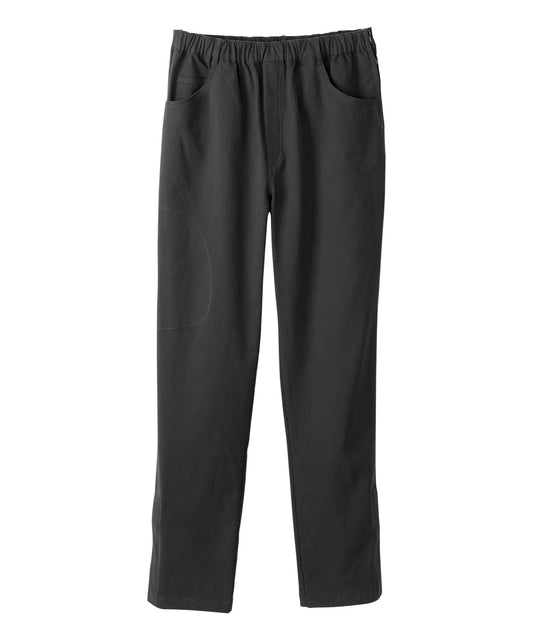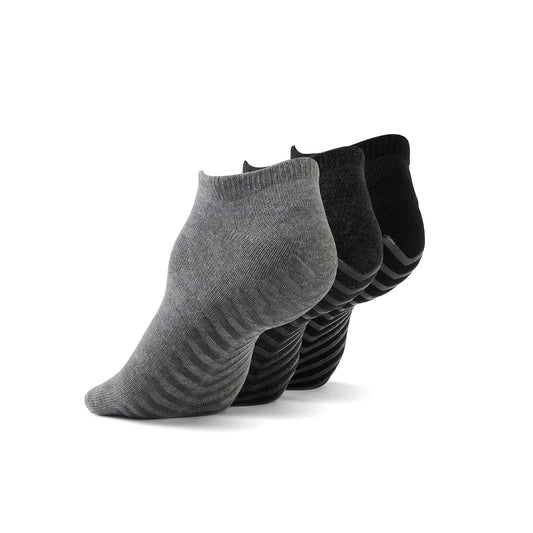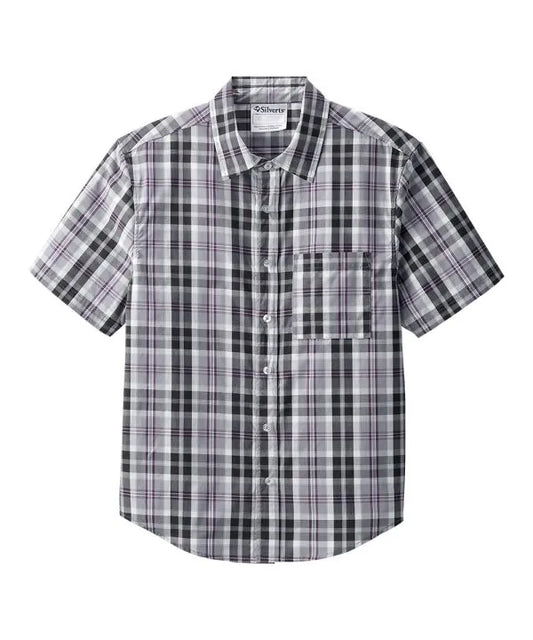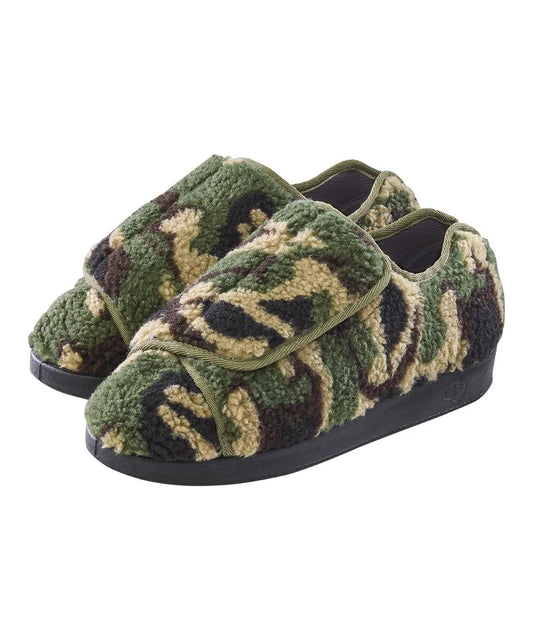Author: Krish Asher
For years, fashion has followed a narrow definition of who gets to feel stylish, comfortable, and seen. Most clothing racks assume a very specific type of wearer, someone young, able-bodied, mobile, and pain-free. But real life doesn’t look like that. Real life includes seniors, people recovering from surgery, those with disabilities, and anyone who’s ever struggled with buttons, tight waistbands, or scratchy seams. That’s why “inclusive fashion” is no longer just a buzzword. It’s a movement and it’s here to stay.
Who Decided ‘One-Size-Fits-All’ Was a Good Idea?
“One-size-fits-all” might be the biggest myth the fashion industry ever sold us. What it really means is “one-size-fits-most… if you happen to fit the mold.” For people with mobility challenges, arthritis, sensory issues, or chronic pain, that kind of sizing and the designs that come with it, are frustrating at best, inaccessible at worst.
Inclusive fashion flips the script. It starts with the question: What would make getting dressed easier, safer, and more comfortable for this person? That’s where adaptive design comes in. Products like June Adaptive’s Women’s Shirt with Magnetic Buttons replace traditional button closures with hidden magnets, allowing for effortless dressing with one hand, no pinching, fumbling, or button rage required. The shirt looks just as polished as a classic button-down but works beautifully for seniors or people with limited dexterity.
Inclusive fashion isn’t about cutting corners. It’s about caring enough to design for everyone , not just the majority.
Women’s Shirt with Magnetic Buttons

Inclusive Brands vs. Fast Fashion: Who’s Actually Walking the Talk?
Fast fashion has made a lot of promises about “diversity” and “accessibility.” But if you look closely, those promises usually show up in a marketing email, not in the actual designs. Stretchy leggings and oversized tees aren’t the same as thoughtful adaptive clothing. In contrast, brands that lead the way in inclusive fashion, like June Adaptive, bake accessibility into every step of the process.
Take the Men’s Magnetic Zipper Hoodie. It’s not just a hoodie with a zipper, it’s a stylish, comfortable essential designed to be zipped with one hand. The magnets are hidden, the fabric is soft and flexible, and the style is cool enough for anyone to wear. It’s perfect for someone recovering from shoulder surgery, dealing with tremors, or simply tired of fighting with bulky zippers.
Fast fashion talks the talk. Inclusive brands walk it, roll it, and live it, side by side with the people they serve.

Easy-Dressing Clothing: Why Isn’t This the Default Yet?
Here’s the thing: adaptive fashion isn’t “extra.” It should be the norm.
Imagine being a senior with arthritis. You wake up in the morning, and your fingers are stiff. Gripping a zipper or fastening a bra feels impossible. Now imagine if your wardrobe actually helped you, if your pants had discreet side zippers, if your bra closed in the front, if your shirts used magnets instead of buttons. Dressing wouldn’t be a chore. It would be a moment of independence.
That’s the logic behind items like the Women’s Soft Knit Pants with Easy Touch Closures, they feature a gentle yet secure fastening system that works even with limited dexterity. They’re soft enough for sensitive skin, loose enough for swelling, and stylish enough for everyday wear. They're not “special needs” clothing. They’re just good designs.
If we can design phones that recognize your face and cars that park themselves, surely we can make pants that don’t require yoga-level flexibility.
Women’s Soft Knit Pants with Easy Touch Closure

Can Adaptive Wear Fix Fashion’s ‘Style vs. Function’ War?
The idea that style and function can’t coexist has dominated fashion for decades. But adaptive fashion proves that’s a false choice. Why shouldn’t someone who uses a wheelchair be able to wear beautiful, wrinkle-resistant jeans that actually fit while seated? Why should someone recovering from surgery have to choose between comfort and confidence?
Adaptive wear doesn’t just bridge the gap, it redefines it. Take June Adaptive’s Women’s Recovery Pants with Side Zipper. These are designed with post-surgery ease in mind, featuring soft-touch fabric and side - open access for people using catheters or recovering from hip replacements. But they look like regular pants, stylish, flattering, and totally appropriate to wear out. You’d never guess they were adaptive, and that’s exactly the point.
Fashion should adapt to you, not the other way around.
June Adaptive’s Collabs: Proof That ‘Inclusive’ Doesn’t Mean ‘Boring’
Let’s debunk a tired myth: inclusive fashion isn’t all beige pullovers and clunky orthopedic sneakers. At least not when June Adaptive is involved.
By partnering with occupational therapists, caregivers, seniors, and people with disabilities, June Adaptive co-creates clothing that’s functional, stylish, and joyful. Think: bold colors, modern fits, and clever design details like magnetic closures and stretchable waistbands that blend seamlessly into everyday wardrobes.
They’re not afraid to push boundaries, either. Take the Men’s Wide Non-Slip Indoor Slippers with Easy Closures — sleek, supportive, and designed for those dealing with swelling, fatigue, or balance issues. They offer dignity with delight — and that’s the future of fashion.
Want to see how fashion can boost emotional wellness too? Check out:
Because adaptive fashion isn’t just about what you wear — it’s how it makes you feel.
Why This Matters: Dignity, Identity, and Daily Life
When we talk about adaptive fashion, we’re not just talking about clothes. We’re talking about identity, dignity, and the freedom to start each day with confidence.
For someone living with cerebral palsy, arthritis, or after a stroke, getting dressed can be the hardest part of the day. The wrong outfit can cause pain, frustration, or even injury. But the right one? It can bring independence. It can help a loved one dress without assistance. It can mean the difference between staying in or stepping out.
Inclusive fashion is about more than zippers and seams, it’s about people.
FAQs: Your Questions, Answered
Q: Is adaptive fashion only for people with disabilities or recovering from surgery?
A: Not at all. Adaptive clothing is for anyone who wants easier, more comfortable dressing especially seniors living with arthritis, chronic pain, tremors, or fatigue. It’s also perfect for people recovering from injury or surgery, those living in care homes, or simply anyone tired of traditional, restrictive clothing. Adaptive fashion isn’t about labels, it’s about living better, with comfort and dignity.
Q: Are magnetic closures safe in the wash?
A: Yes! June Adaptive’s magnetic shirts, dresses, and jackets are designed for real life. That means they’re machine-washable and built to retain magnetic strength through regular wear and laundering. Just follow the care label on each garment, and you’re good to go no extra steps needed.
Q: Do adaptive pants look like regular pants?
A: Absolutely. Modern adaptive pants like the Women’s Recovery Pants with Side Zipper or Men’s Easy Dressing Pants are designed with tailored silhouettes and discreet closures. They blend seamlessly into any wardrobe and offer fashion-forward comfort without looking “medical.” Think style without the struggle.
Q: Can I introduce adaptive clothing to a loved one who’s picky about what they wear?
A: Start small and stylish. A magnetic shirt or a pair of soft, pull-on pants is a great place to begin. Let them feel the difference: how easy it is to put on, how comfortable it is to wear, and how dignified it looks. Adaptive clothing often wins people over by making their daily routine feel smoother, not different.
Q: What makes adaptive fashion different from just “comfortable clothes”?
A: While comfort is key, adaptive fashion goes a step further and solves real-world challenges. We’re talking about wheelchair-optimized cuts, magnetic buttons for one-handed use, open-back designs for assisted dressing, sensory-friendly materials, and slip-resistant footwear. Every piece is designed with intention not just softness.
Q: I’m shopping for someone who uses a wheelchair. What should I look for?
A: Look for seated-fit pants (higher in the back, lower in the front), soft fabrics, side or back closures, and tag-free designs. Pieces like the Men’s Magnetic Fly Pants with Back Overlap or Women’s Soft Knit Pants with Touch Closures are made specifically for all-day seated comfort and easy caregiver assistance.
Q: Is adaptive fashion available in plus sizes or for different body shapes?
A: Yes — inclusive sizing is an essential part of adaptive fashion. June Adaptive offers a range of styles that fit a variety of body types, including plus-size options and adjustable features like elastic waistbands, Velcro closures, and wrap designs for a truly custom fit.
Final Thoughts: Adaptive Fashion Is the Future
The truth is, everyone benefits from inclusive design. Whether you’re dressing with one hand, navigating post-op recovery, or simply want a little extra comfort in your day, adaptive fashion delivers.
So no, this isn’t a trend. This is the reset button fashion needed and we’re just getting started.
Join our email list below for a free guide delivered straight to your inbox, plus new adaptive fashion updates, dressing tips, and more. Sign up now and empower your journey!















